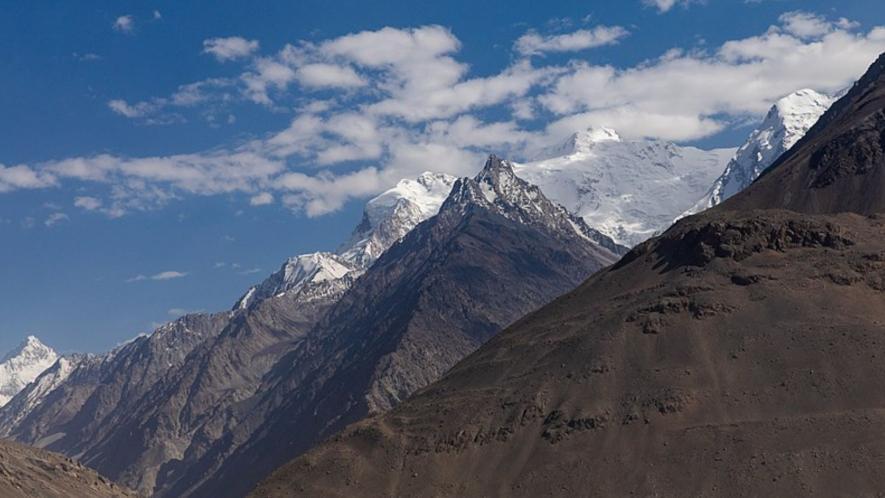Himalayan Region in Dire Straits, Irreversible Changes in Climate System

The worst long-term – and relentless -- damage is being seen in the upper reaches of the Himalayas, says SOE 2024 report.
(Image courtesy: Wikipedia)
Patna: Amid climate change posing a serious threat, an alarming revelation about the Himalayan region in India has come to light. Between 2013 and 2022, the Himalayan region accounted for 44% of all the disasters reported in the country. Floods, landslides and thunderstorms – 192 in all – constituted the bulk of these incidents. In fact, the cloudbursts and torrential rains experienced in the region in 2023 are curtain-raisers to a future that is already upon us, and will become more pronounced with every passing year.
This assessment of the Himalayan region and the impact of climate change that it is encountering is a key focus of the recently released State of India’s Environment 2024 (SOE) report. The report is prepared and released every year by the Centre for Science and Environment (CSE) and Down To Earth magazine.
This year, the SOE 2024 (as the report is referred to in short) was unveiled at the annual conclave ‘Anil Agarwal Dialogue’, in Nimli, Alwar, in Rajasthan on February 28. The Dialogue is organised every year by CSE, the New Delhi-based think tank.
Between April 2021 and April 2022, a total of 41 incidents of landslides were recorded across the country: 38 of these happened in Himalayan states, with Sikkim witnessing the highest number (11), says the report.
Kiran Pandey, head of CSE’s Environment Resources Unit, writes in the report: “A close look at the data shows an uncomfortable trend. In recent decades, these disasters are occurring more frequently and getting more severe, causing a significant loss of life and damage to property.”
The worst long-term – and relentless -- damage is being seen in the upper reaches of the Himalayas. The rise in average surface temperatures in the Himalayas is causing glaciers to melt rapidly and retreat at an accelerating rate.
The Hindu Kush Himalayas has seen a 65% faster loss of glacier mass, according to a study by the Nepal-based International Centre for Integrated Mountain Development (ICIMOD).
During 2010-19, glaciers in the region lost a mass of 0.28 metre of water equivalent per year (m we) in comparison to 0.17 m we per year in the period 2000-09. The Karakoram Range, which was known to be stable, has also started showing a decline in glacier mass, losing 0.09 m we per year during 2010-19.
The SOE 2024 report quotes Izabella Koziell, ICIMOD’s deputy director general: “The glaciers of the Hindu Kush Himalaya are a major component of the Earth system. With two billion people in Asia reliant on the water that glaciers and snow here hold, the consequences of losing this cryosphere are too vast to contemplate. We need leaders to act now to prevent catastrophe.”
The ice-melt from the glaciers is forming glacial lakes across the Himalayan range. The number of such lakes in Uttarakhand and east of Himachal Pradesh has increased from 127 in 2005 to 365 in 2015. The increasing frequency and ferocity of cloudbursts is causing these lakes to overflow or burst their banks and cause havoc downstream.
Overall, the Himalayas have already lost more than 40% of their ice, and are likely to lose up to 75% by the end of this century. This is making the vegetation line in the Himalayas shift upwards at the rate of 11 to 54 m per decade. With 90 per cent of Himalayan agriculture being rainfed, this will make it impossible to sustain the livelihoods of the people who now inhabit the Himalayan region, and endanger the lives of those in the plains who depend on its waters.
Studies say that the western Himalayas had lost 8,340 sq km of permafrost area between 2002-04 and 2018-20; about 965 sq km of area disappeared in the Uttarakhand Himalayas between 1970-2000 and 2001-17. The loss of permafrost can lead to infrastructure damage.
“We are already seeing the effects of this, for example, in landslides caused by thawing permafrost,” says Dr Miriam Jackson, ICIMOD’s senior cryosphere specialist, and one of the speakers at the Anil Agarwal Dialogue.
The head of Dehradun-based Wadia Institute of Himalayan Geology, Dr Kalachand Sain, another speaker at the Dialogue, said that “stopping development in the Himalayas was not the solution – this development needed to be done properly with guidelines prepared in consultation with all stakeholders. To mitigate disasters, we need to understand their root cause and get everybody — national governments, locals, experts, journalists — involved and interested in addressing them.
Get the latest reports & analysis with people's perspective on Protests, movements & deep analytical videos, discussions of the current affairs in your Telegram app. Subscribe to NewsClick's Telegram channel & get Real-Time updates on stories, as they get published on our website.
























